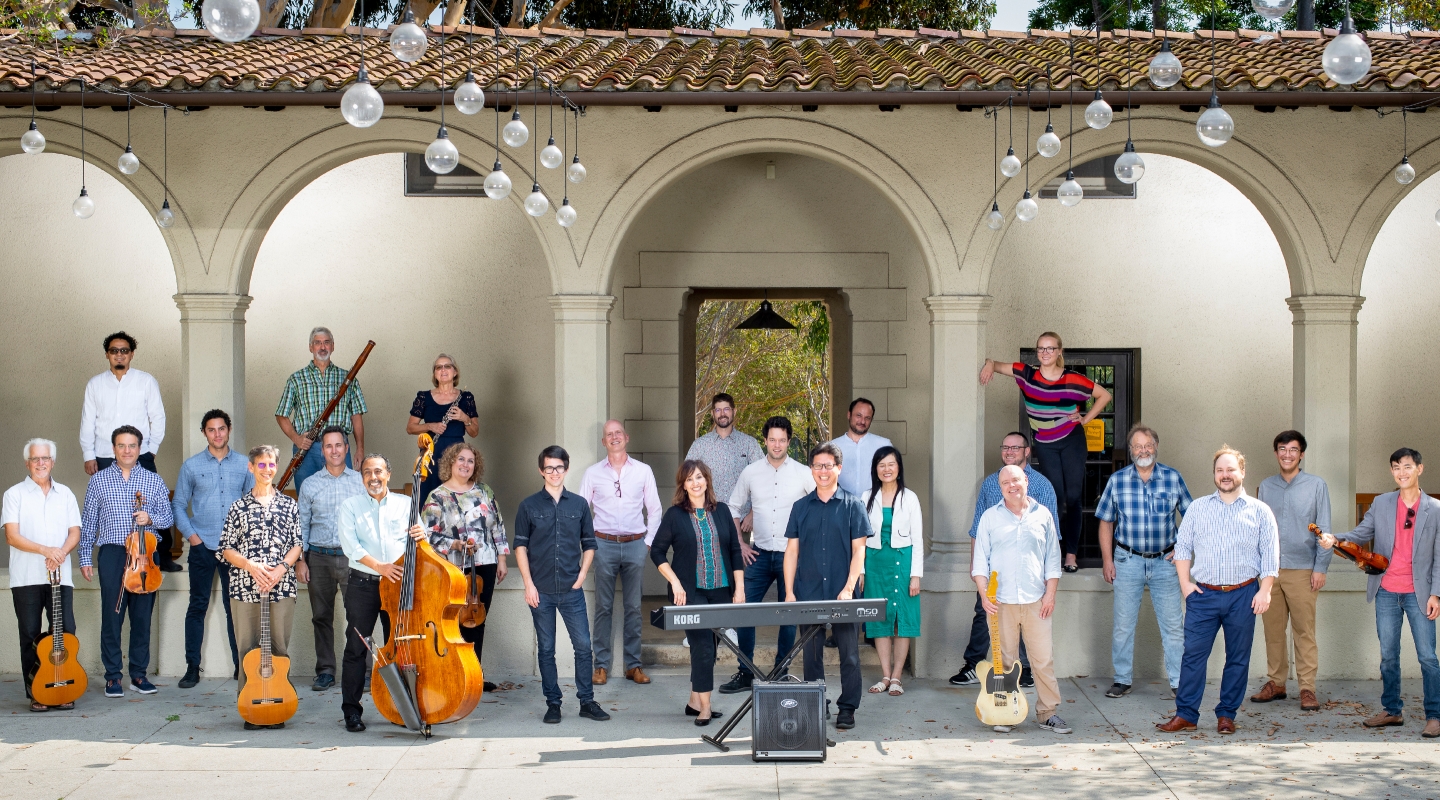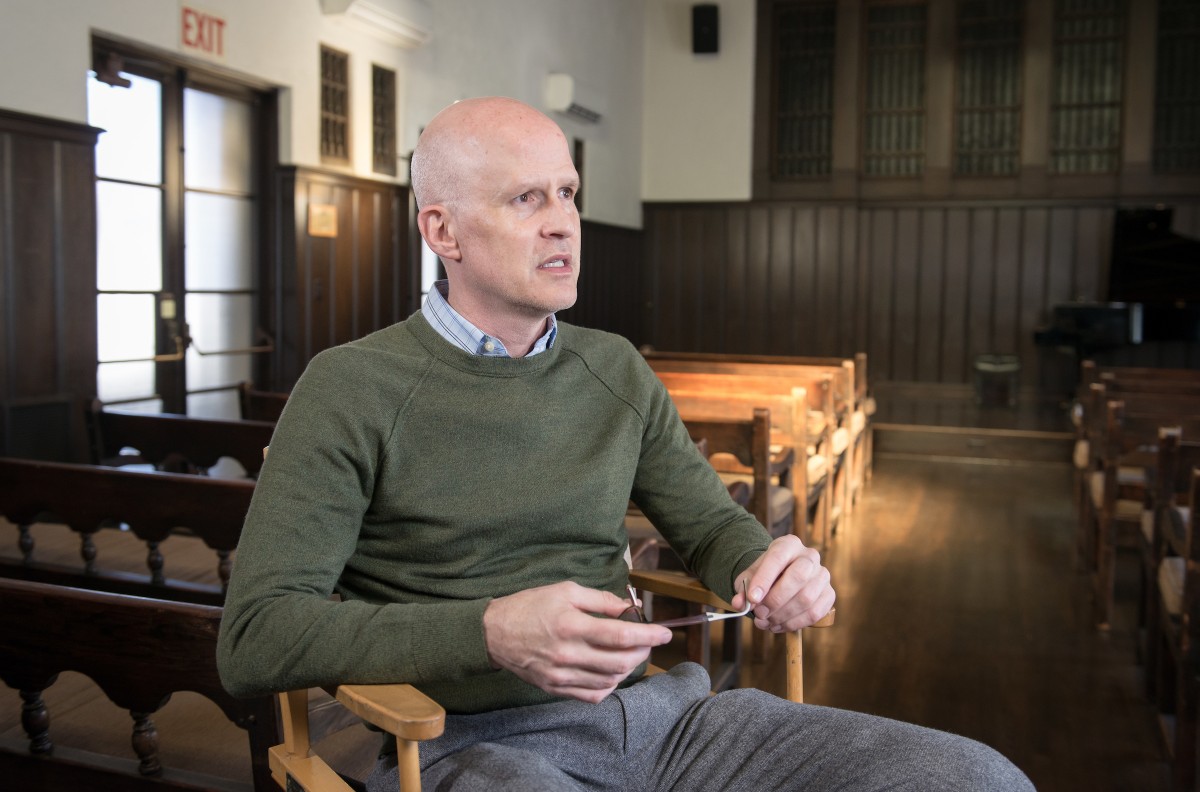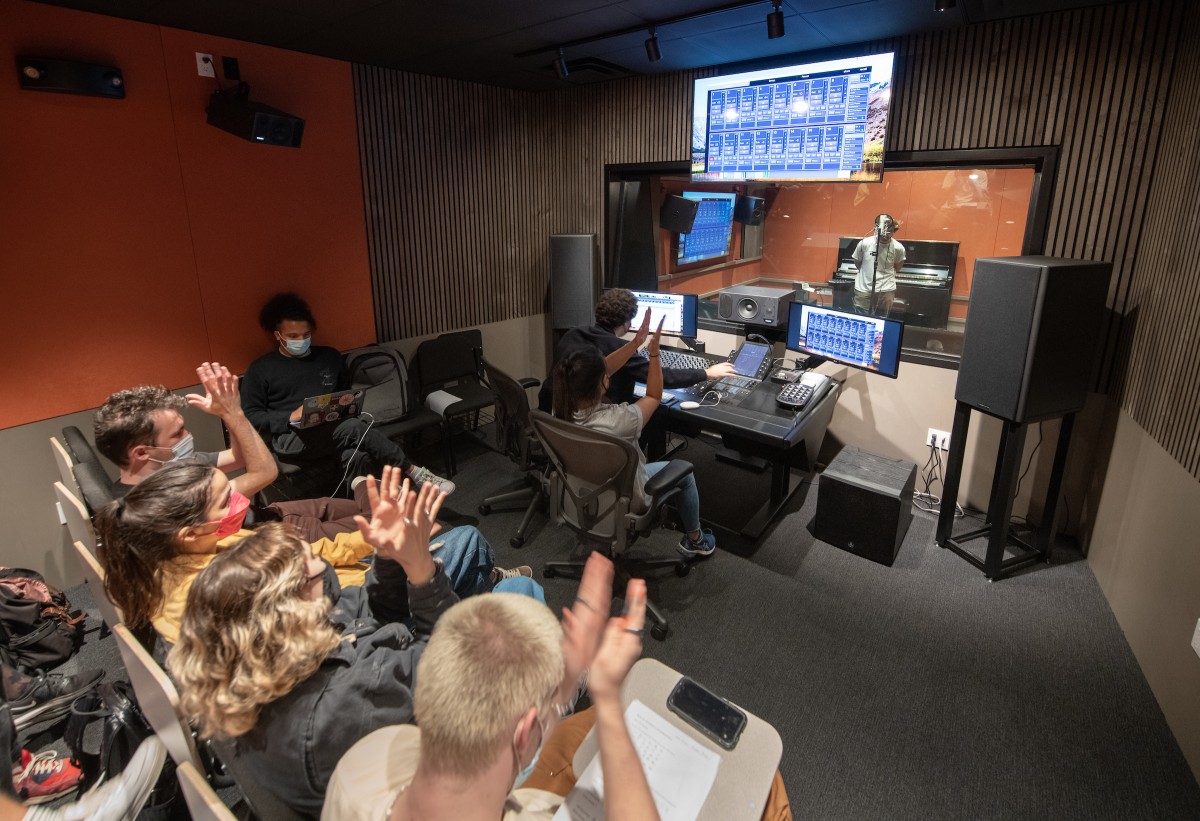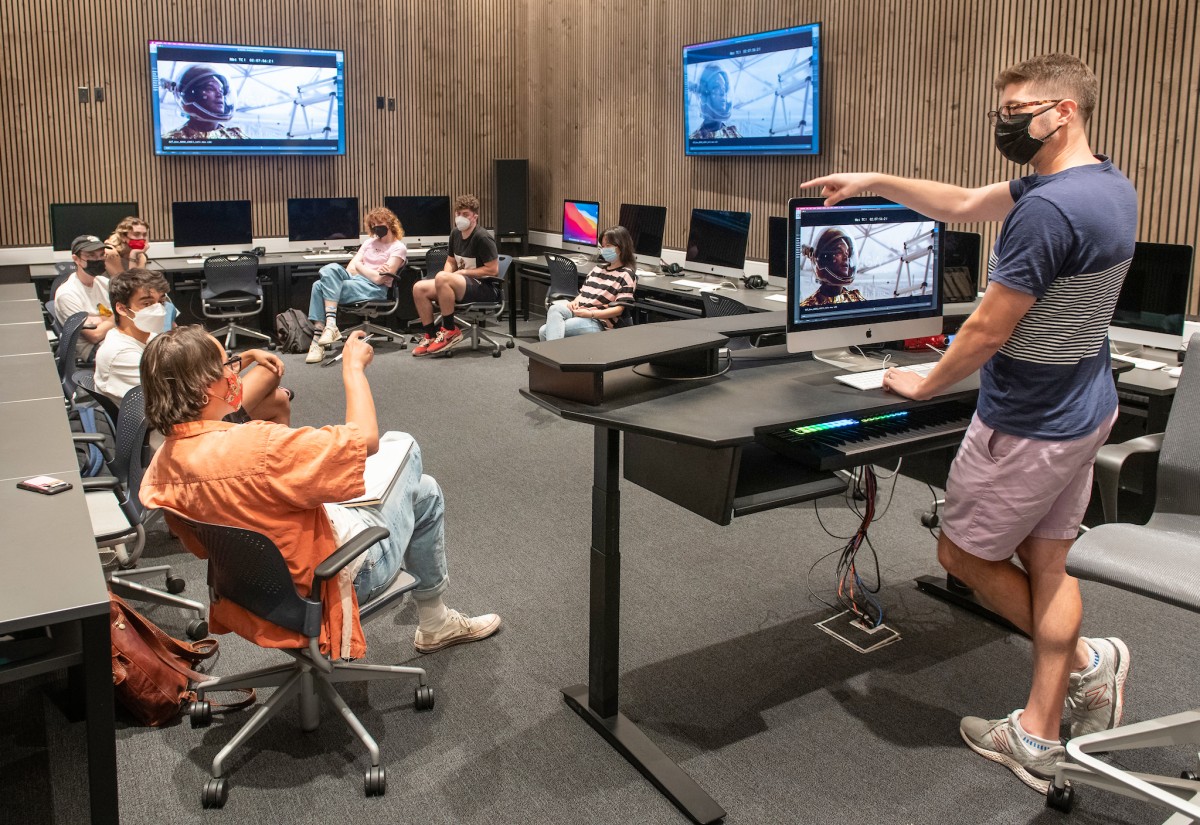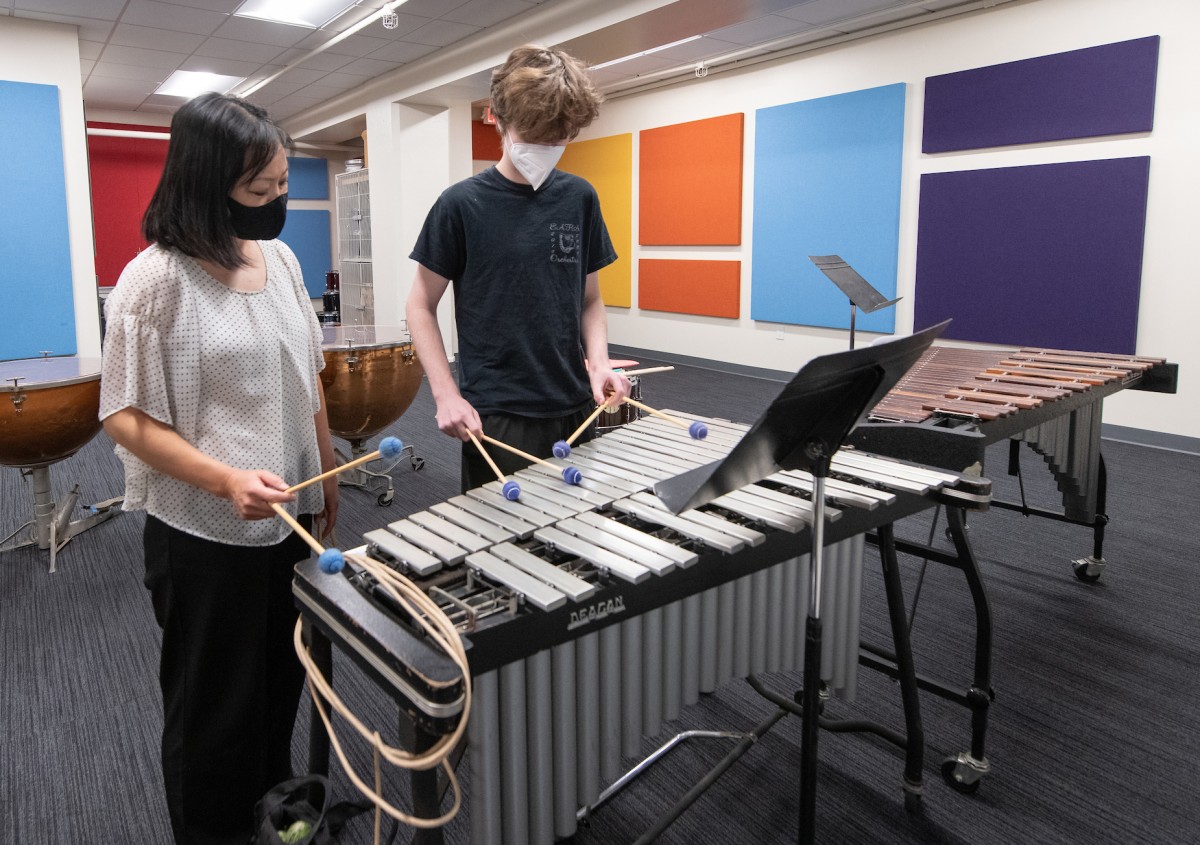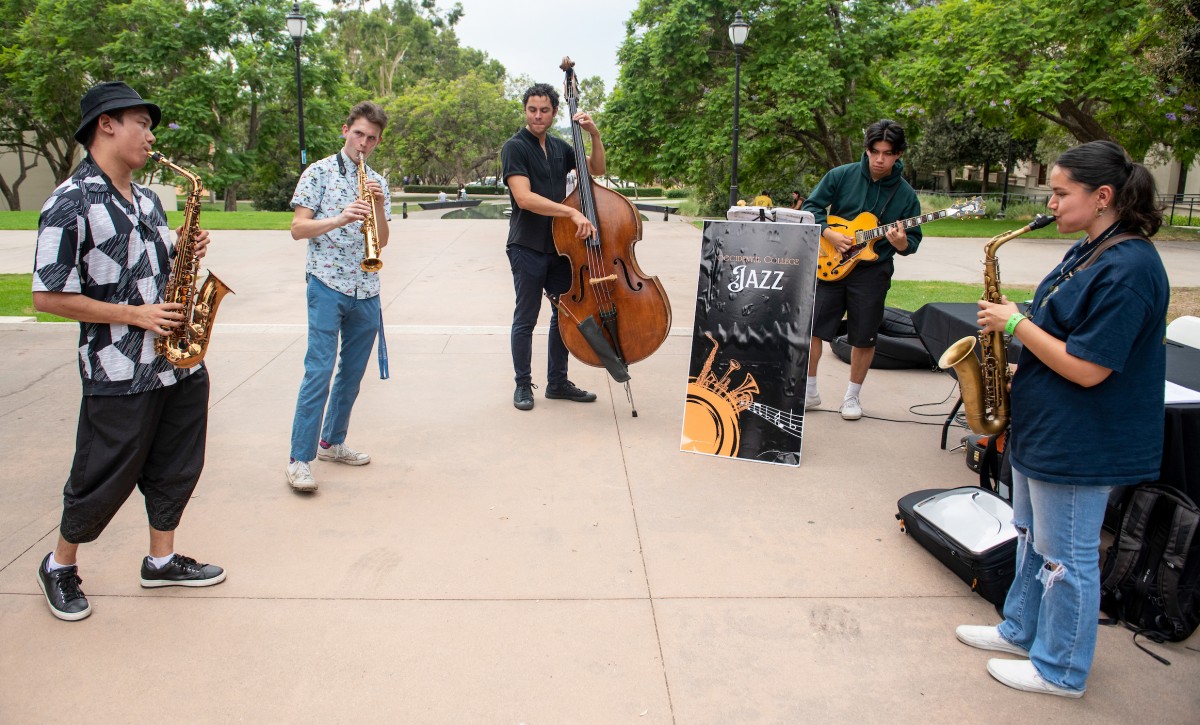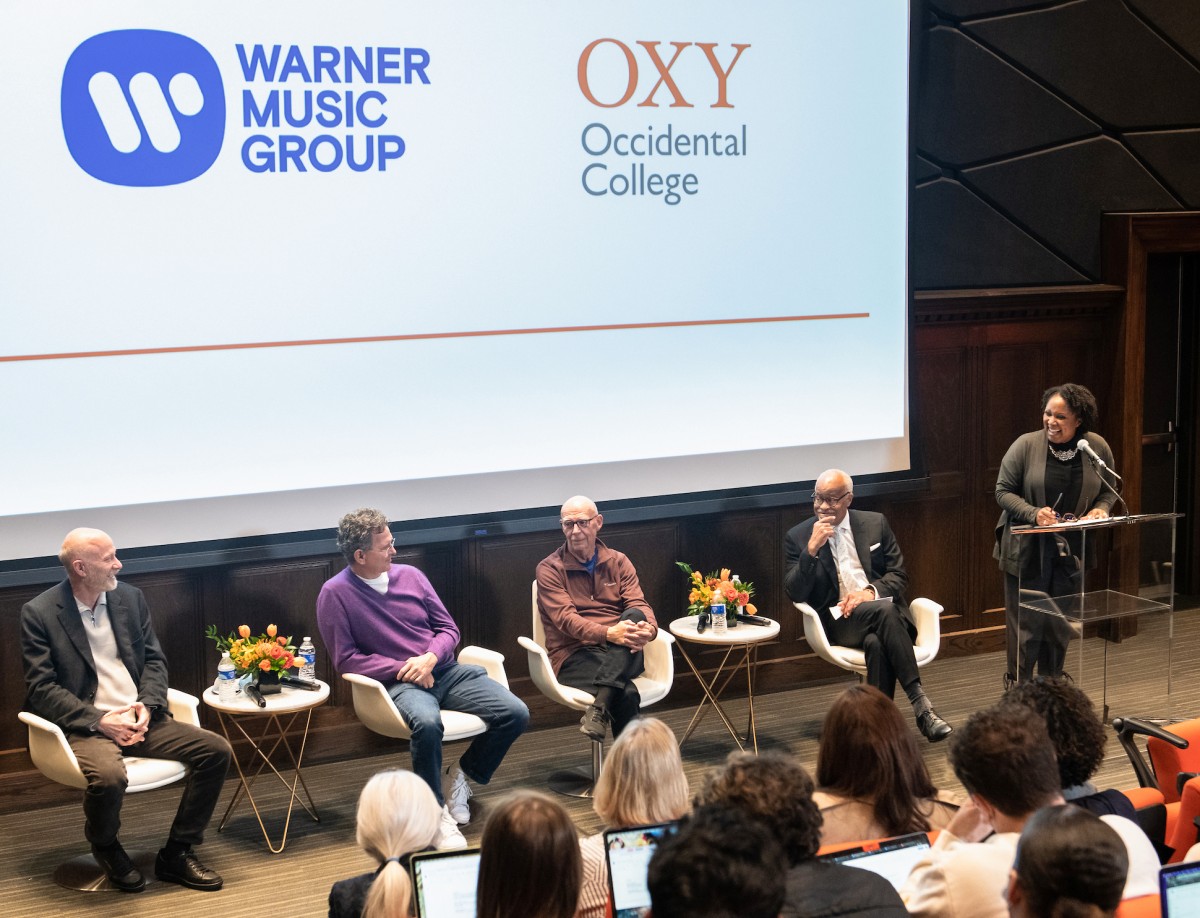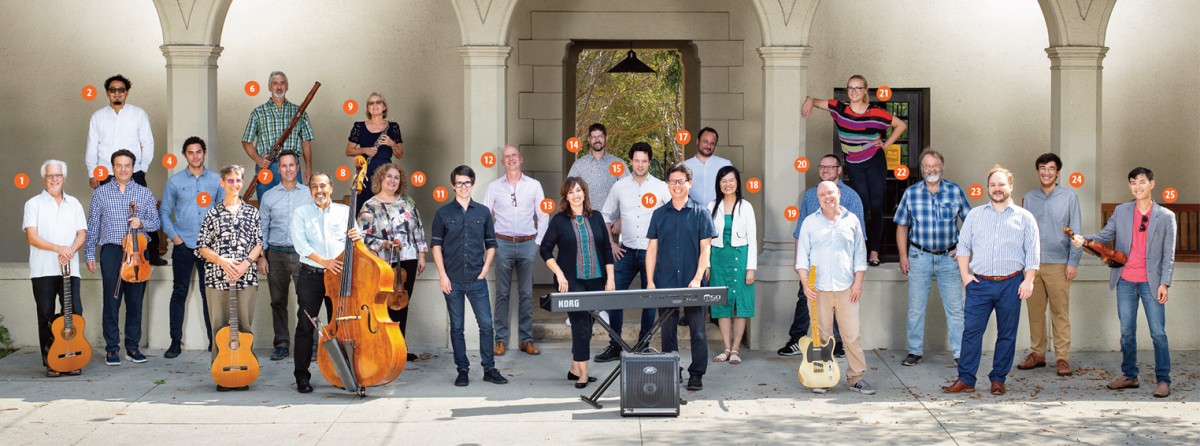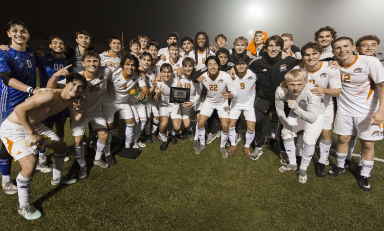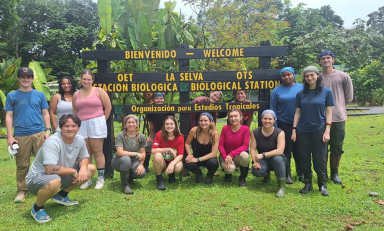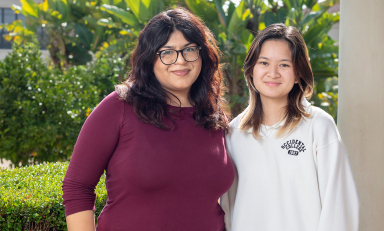One of the College’s oldest disciplines, music gets a makeover in response to the production boom of the 21st century—but if you want a classical education, you’ll find that as well
When Associate Professor of Music David Kasunic matriculated at Amherst, he imagined he would pursue math or diplomatic history as a major. “I was a mathlete in high school,” says the first-generation college graduate, who took up the piano at age 7. “I thought that music was something that was avocational, like being an actor. I didn’t have an understanding of the options that one could have in music as a profession.
After two postgraduate years at Amherst as a graduate associate in music and assistant conductor of the college choral society, Kasunic did his master’s and Ph.D. studies in musicology at Princeton, writing his dissertation on piano music and singing in 19th-century France. Looking to the future, “I was committed to teaching at an undergraduate liberal arts college,” he says. “When I interviewed at Oxy, it seemed like a place where I would be fully supported in my teaching and my research—a place where I could thrive and grow.”
When Kasunic arrived at Oxy 14 years ago, the Music Department operated much as it had for decades, graduating a handful of music majors each year (six in 2008) and fulfilling the general needs in the manner of any “liberal arts college anywhere in the country,” he says. “But the way we looked in terms of our curriculum and what we offered did not reflect our location to the extent that it could”—a sentiment shared by his department colleagues.
Fast forward to fall 2022: With 57 majors, music is now Oxy’s sixth most popular major, after economics, diplomacy and world affairs, biology, psychology, and computer science. It’s a remarkable crescendo that reflects the convergence of two movements: teenagers making music on their laptops, and Occidental pivoting to offer a curriculum more aligned with prospective students’ interests.
“They have done something pretty remarkable in a short period of time,” Charlie Cardillo, vice president for institutional advancement, says of Oxy’s music faculty. “It has so much to do with the introduction of all these dimensions of music including music business, songwriting, film scoring, composition, and music production—all undergirded by a true liberal arts curriculum rooted in music theory and history and culture.”
As Kasunic sees it, music production is “an essential part of the wide spectrum of creative activities that constitute everything we listen to. Anything that you hear that’s mediated—that’s not a live performance—is produced. It brings music composition and music theory together.
“In a competitive higher education landscape, Oxy will be able to offer a wholly modern, comprehensive music education that is embedded and defined by the liberal arts,” he adds. “Given the singularity of what we can do, we believe that this will be a game changer—not just for the department but for the entire College.”
Going back nearly 100 years, Occidental’s music curriculum has strived to reflect the medium’s place in the contemporary landscape. “The establishment of a music department in 1926 paralleled the growing interest in Southern California in the arts, evidenced by the development of the Hollywood Bowl concert series and of the Los Angeles Philharmonic Orchestra,” Professor Emeritus Andrew Rolle ’43 wrote in his centennial history of the College. A music building was constructed in 1929, and five years later, a Carnegie Corporation grant of $65,000 enabled the establishment of a library of records and musical scores.
By the early 2000s, colleges were seeing a decline in the enrollment of students with a formal music education—such as basic music theory, or even instrumental proficiency. “A lot of that is a product of the gutting of public arts,” says Kasunic, a historical musicologist by training who teaches classes in Western music history and music appreciation.
Then, in 2004, Apple launched GarageBand, allowing anyone to experiment with making music on their laptops. “Students were coming to college increasingly engaged in creating music,” Kasunic says, “but the study of music was an alien enterprise.”
After he became department chair in 2014, Kasunic set about what he describes as a “project of reclamation of the earliest visions” for the Booth Music Quad and reimagining music for the 21st century. “It was about realizing a vision for having our program look more like Los Angeles,” he says. “There was a collective will among the faculty to start having it look more like what prospective students may want to take, and also connect more to the industry around it.”
Over a “breathless” two-year stretch from 2016 to 2018, Kasunic and his colleagues worked with a host of departments across the College—including Information Technology Services, Facilities, and the Center for Digital Liberal Arts—to build and roll out a full music production curriculum. Concurrent with its launch during the 2018-19 academic year, Occidental assembled a Music and MAC (Media Arts and Culture) task force to address the infrastructure needs of two of Oxy’s fastest-growing majors. (In reconvening the task force last year, Cardillo says, “It became clear that while there are obvious synergies between a well-supported MAC program and a well-supported music program, their needs were distinct enough that we needed to tease apart those distinctions.”)
According to Kasunic, the College has fewer than half the number of practice rooms at any of its peer institutions—six on the entire campus. Offices and classrooms also double as instructional studio space, resulting in “an elaborate jigsaw puzzle that has to be figured out each semester,” he says.
In addition to “at least” doubling the number of practice rooms, a top priority for Kasunic is clustering all of them together and converting the existing practice rooms in Booth Hall into much-needed office and studio space. “We now have five instructors having to share one office,” Kasunic says. “As we add new people, we don’t have spaces for them.
“For our department to do well, all aspects of our program have to be singing,” Kasunic continues. “In terms of running a functioning music department, we need instructional space. We need a good medium-size concert hall.” (We’ll circle back to this topic shortly.) “We need to be aspirational as well in terms of personnel through endowed positions and supporting funds.”
In addition to Kasunic, Oxy’s regular music faculty includes Associate Professor Shanna Lorenz, a scholar of First Nations cultural traditions who is spending the fall semester as Vancouver Island University’s 2022 Fulbright Canada Visiting Research Chair in Indigenous Studies; Associate Professor of Composition Adam Schoenberg, an Emmy-winning and Grammy-nominated composer; and Assistant Professor Stephen S. Hudson, a music theorist whose research topics include heavy metal and R&B and soul, who joined the College this fall. The department hopes to hire a full-time, tenure-track position in music production for the 2023-24 academic year.
Of the 53 personnel in the Music Department, only 10 of those are full-time positions (another 36 teach voice or an instrument; an additional seven teach four-unit music courses). “We would like to have endowed chair positions such that the things we care about in the department—having a great composer like Adam Schoenberg, or a great director of choral music like Désirée LaVertu—are not contingent on budget cycles or having to reapply for these positions through a hiring process,” Kasunic says. (Oxy currently has no endowed professors in music.)
He points to other recent hires who are energizing Oxy’s music program, including Chris Kim, Choi Family Director of Instrumental Music, who joined the College in fall 2019. Over 15 years at Cornell as director of orchestras—a tenured, endowed chair—Kim built the long-neglected orchestra program into a “fully supported, well-running machine”—partnering with local public schools, touring internationally, and receiving five ASCAP Awards for Adventurous Programming.
Homegrown singer-songwriter Ramona Gonzalez ’09—who has released five acclaimed albums under the name Nite Jewel and was named Oxy’s inaugural Johnson-Fix Professor of the Practice of Songwriting in 2018—“is a perfect example of someone who believes that being a complete human being, a complete thinker, makes you a much better artist and musician,” Kasunic says.
Leaning further into the music production space, an eight-unit course titled Music and Artificial Intelligence is being co-taught by Max Foreman, director of the Choi Family Music Production Center, and Fabio Paolizzo, Mellon postdoctoral fellow in audio engineering. Offered in conjunction with the Computer Science Department, the double course fulfills both the fine arts and mathematics/science requirements. “One thing that we have been hoping to do with the Mellon Arts & Technology grant is to create connective tissue with STEM fields, because a lot of our students have double majors in computer science or cognitive science and are very interested in those topics,” Kasunic says.
Which brings us back to the topic of space. Few would question the beauty of Booth Music Quad—a popular gathering space for ceremonies and receptions that has remained largely untouched over the last 60-plus years. But its aesthetic appeal, Kasunic suggests, has made people “blind” to the shortcomings of the space with regards to the music program. “It’s wholly inadequate for conducting music in the 21st century,” he says. Sonically speaking, “It’s porous—two teams of architects determined that we don’t have one acoustically sound wall anywhere in Booth.”
To that end, in 2019, the department’s music library was moved from Booth Hall to the Academic Commons to make room for a new music production space designed by architect Peter Grueneisen of Santa Monica-based firm nonzero\architecture, which has designed soundstages for Sony and DreamWorks Animation as well as for two-time Academy Award-winning composer Hans Zimmer (The Lion King, Dune). The space they were given to work with was below ground level on almost 2½ sides and “was fairly self-contained,” Grueneisen told Occidental magazine last year. “From a soundproofing standpoint, it was quite ideal.”
Just as gifts from friends of the College facilitated the construction of Thorne Hall in 1938 and Booth Music & Speech Center in 1960, much of the department’s physical growth is contingent on engaging, if not expanding, Oxy’s donor base. “The challenge right now is to create a throughline to the past as we move into the future by having our older alumni recognize that we are not sacrificing the traditional elements of our program but expanding on them, strengthening them as we have a department that reflects more of what L.A. offers and what our students who are interested in,” Kasunic says.
Part of that narrative involves revamping and reclaiming two of the College’s premier performance spaces. With 2024 marking the 60th anniversary of Herrick Chapel and Interfaith Center, Kasunic sees an opportunity to commemorate that milestone by upgrading Herrick’s lighting and acoustics. (Grueneisen and his team produced a proposal prior to the pandemic but the project remains in limbo.)
Another project on the horizon is reopening the orchestra pit in Thorne Hall, which was closed off in the late 1990s. “The space in which the percussion studio is housed was chosen because it has the most direct access to the orchestra pit in Thorne,” Cardillo says.
Programmatically, another initiative on the horizon is to replace Oxy’s aging fleet of pianos, the average age of which is 51 (which is old in piano years). “The piano is the foundational instrument of any credible music program,” says Cardillo. “Steinway was brought in to assess our fleet, and the hope would be that we can replenish our fleet of practice room pianos, teaching pianos, and performance pianos to bring them up to caliber.” (Aspirationally, Oxy seeks to join the ranks of more than 200 All-Steinway Schools globally. “It’s attainable over time,” Kasunic insists.)
Two recent instrumental acquisitions by the College speak to the ongoing depth and breadth of an Oxy music education. Using money from the Barbara U. Johnson ’43 Fund for New Music and the Mellon Arts and Technology Grant, the College purchased a state-of-the art halldorophone, an electro-acoustic string instrument modeled on the cello and made in Iceland. “We’re the first academic institution to own one in North America,” Kasunic says. (Composer and native Icelander Hildur Guðnadóttir, who won the 2019 Academy Award for her score for Joker, wrote much of the music for the film on the halldorophone.)
Schoenberg is using the halldorophone to compose a cello concerto for the Atlanta Symphony and Chorus, and a concert in Bird Studio of new music by Oxy student composers last December included three pieces written for halldorophone—the first works premiered in the United States for the instrument, Schoenberg notes.
In October, Occidental made its third consecutive appearance on Billboard’s list of 38 top music business schools worldwide—one of only three liberal arts colleges to make the cut. Oxy “offers abundant access to internships and has developed courses such as Introduction to Music Business, where students collaborate to create artist profiles and business plans that they then execute through digital service providers such as Bandcamp and Spotify, as well as offline,” the magazine noted.
“While I imagine that other schools down the line will look more like our department, they won’t have our location,” says Kasunic, who is passing the departmental baton to Lorenz next year concurrent with a much-needed yearlong sabbatical. “In terms of attracting personnel, internship opportunities, and visiting artists, these are the things that you get by virtue of being in Los Angeles.
“If we can get the infrastructure, the spaces, and the instruments we need,” he adds, “everything else will come.”
Twenty-five of the 53 personnel in Oxy’s Music Department assembled for a photo in September. 1. Riner Scivally, classical and jazz guitar instructor. 2. César Castro, director of Son Jarocho Ensemble. 3. Michael Larco, viola instructor. 4. Jonathan Richards, bassist and director of the Occidental Jazz Ensemble. 5. Ron Berman, classical and jazz guitar instructor. 6. Allen Savedoff, bassoon instructor. 7. Dan Long, visiting instructor. 8. Simeon Pillich, resident professor. 9. Catherine Del Russo, oboe instructor. 10. Aroussiak Baltaian, violin instructor. 11. Stephen S. Hudson, assistant professor. 12. David Kasunic, associate professor and department chair. 13. Désirée LaVertu, resident director of choral and vocal activities. 14. Adam Schoenberg, associate professor. 15. Max Foreman, director of the Choi Family Music Production Center. 16. Chris Kim, Choi Family Director of Instrumental Music. 17. Fabio Paolizzo, Andrew W. Mellon Postdoctoral Fellow. 18. Junko Ueno Garrett, piano instructor. 19. Steve Gregory, rock guitar instructor. 20. Edmond Johnson, director of academic advising. 21. Celka Ojakangas, visiting assistant professor. 22. Alan Geiger, accompanist. 23. Stephen Cabell, visiting assistant professor. 24. Alexander Zhu, production manager. 25. Jin-Shan Dai, violin instructor.

